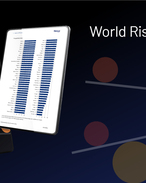This article is 11 years old. Images might not display.
A study into the mental wellbeing of fly-in fly-out workers in Western Australia’s resource industry has uncovered an unsympathetic, “suck it up princess” workplace culture when it comes to coping with job stress.
Dubbed one of the largest studies into the mental wellbeing of employees working split rosters, more than 900 anonymous staff provided insights into the benefits and challenges of the growing lifestyle.
Spearheaded by suicide prevention agency Lifeline WA and physiologists from Edith Cowan University, the study found that while there was considerable focus on the safety of employees, there was limited attention to their emotional and mental wellbeing.
“This research has demonstrated that the FIFO existence can be challenging, and found in particular that stress generally increased and was reported to be at the highest levels in the days leading up to leaving for work,” Lifeline WA chief executive Fiona Kalaf said.
According to the findings, FIFO workers had minimal knowledge of its realities before taking up the job, with long periods of work and the separation of family/home weighing on many.
In addition, adjusting to long day/night shifts was seen as a stress factor, while stress was reported from accommodation and work conditions onsite that “were isolating and subject to overly onerous rules, that for some FIFO workers created a distinct sense of entrapment.”
“Overall, the majority of FIFO workers maintained a ‘suck it up princess, you just do it’ approach to their FIFO role and coping,” the report noted.
“A significant number of FIFO workers spoke of using alcohol and/or illicit drugs to manage disrupted sleep and stress.”
While this was a cause for concern, respondents reported maintaining communication with family and friends as a highly regarded coping tool.
Respondents also felt vulnerable to intensive securitisation, intimidation from higher management and the threat of job loss.
While most FIFO workers were aware of support services on offer, the majority were unwilling or reluctant to pursue help.
Kalaf said stigma was the main barrier to help-seeking. Most workers did not want to reach out for help out of fear of appearing soft, with workers instead withdrawing emotionally.
The other main barrier was structural, being the lack of service accessibility on site.
Some of the key recommendations from the survey included addressing organisation cultures such that seeking help is encouraged, develop supports that target the needs of specific groups and develop pre-employment support so people know what to expect from FIFO and how to cope.
Benefits of FIFO work included high remuneration and spending time with family during periods at home.
However, workers believed capping rosters to a maximum of three weeks away from home would reduce the stress of family separation.
Kalaf said while stigma was the greatest challenge to be overcome in encouraging FIFO and DIDO workers to use support services, the quality of the workplace relationships was the greatest opportunity to be harnessed.
Lifeline WA and the Australian Institute of Management WA will use the findings to develop preventative programs, similar to OHS programs that protect employee’s physical wellbeing.
Out of the 924 respondents, more than 80% were male. One in 10 were divorced and almost half had children.























